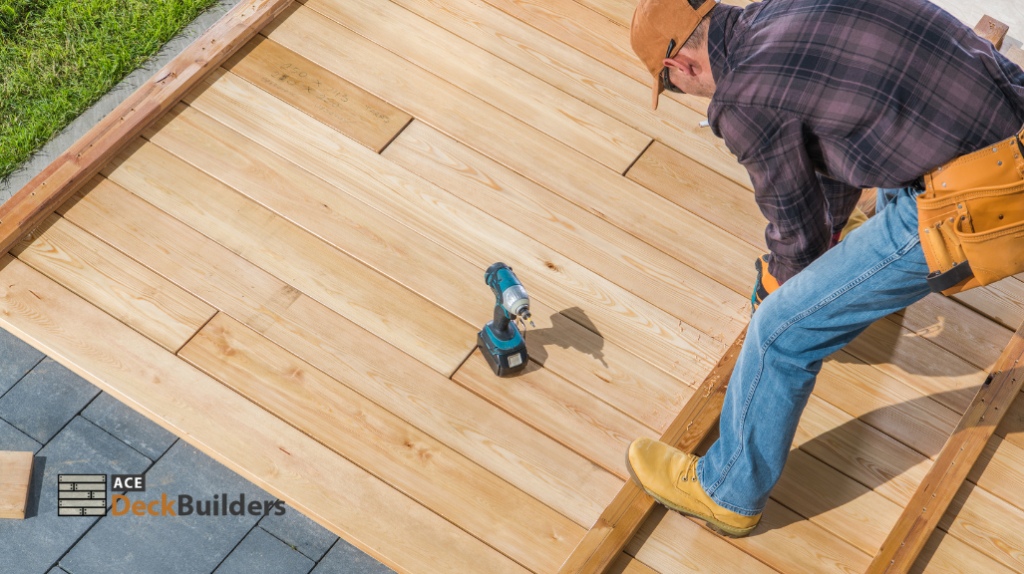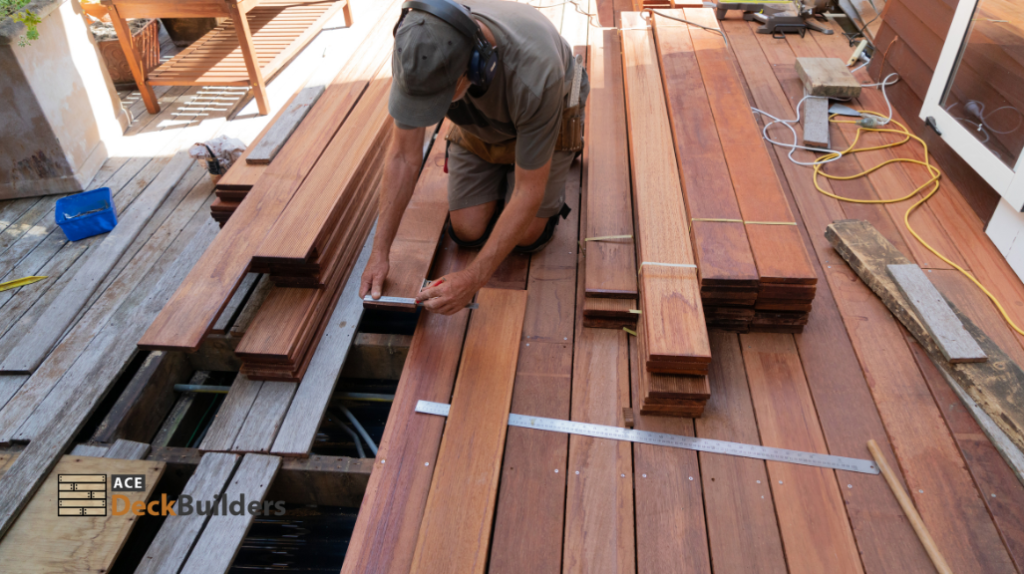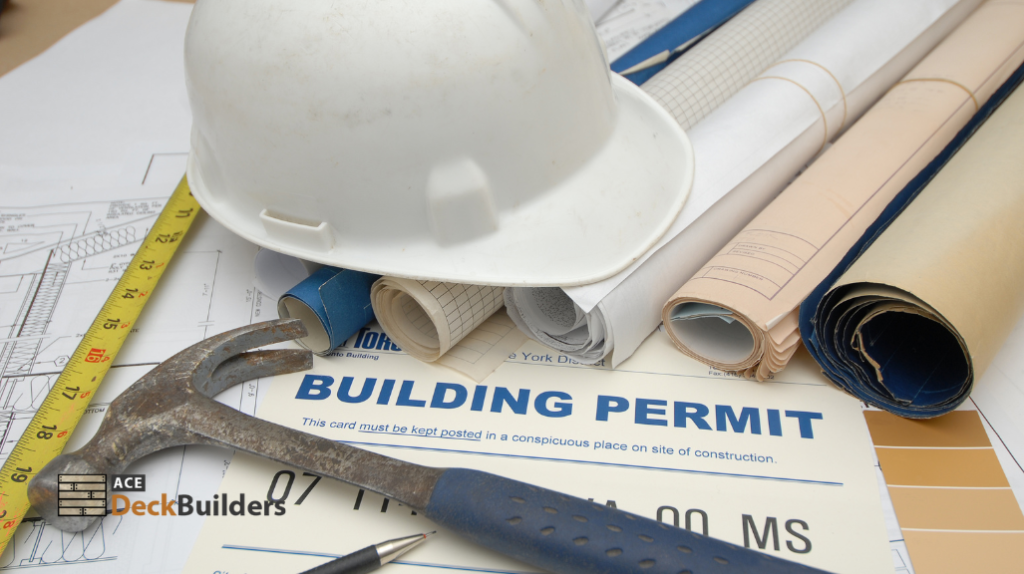TL;DR
The right deck builder proves five things up front: (1) local permitting fluency, (2) structural literacy (ledger, footings, spans, railings), (3) material guidance for Texas heat/UV, (4) itemized scope and change-order rules, and (5) a realistic schedule with inspection milestones. Start by shortlisting specialists who can create custom decks , request artifacts (plan set, inspection tags, estimate), and compare like-for-like proposals. To see the level of process and craftsmanship you should expect, consult the team at Ace Deck Builders.
Table of Contents
ToggleWhy Choosing Right Matters in Austin

Austin isn’t a “typical” deck market. Heat, UV load, and storm bursts are brutal on deck materials; city and HOA approvals add steps; soil and drainage vary across the metro. A good deck can look nice—great ones are quiet underfoot, shed water correctly, and pass inspections on the first try. That difference is your builder.
In the paragraphs below, you’ll learn exactly how to interview and evaluate pros so your project finishes on budget, on schedule, and built to last.
Build Your Shortlist the Smart Way
Start with specialists. Look for companies that primarily focus on deck construction, including decks, stairs, railings, and shade features. Why? Specialists repeat the exact structural details daily and maintain libraries of ledger and railing connections that pass Austin inspections.
Local proof matters. Favor recent, nearby projects (last 6–12 months) with photos that show structure, not only beauty shots. Request an approved plan set and inspection tags for a job in your ZIP code.
Three quotes beat ten. You want depth, not inbox chaos. Interview three well-qualified firms providing deck building services and insist on itemized estimates so you can compare apples to apples.
Must-Have Credentials vs. Proof of Capability
Credentials are a gate to enter the game; capability wins the game.
Must-have credentials
- Business & insurance: Request a COI (certificate of insurance) naming you as certificate holder.
- Safety: Ask for written jobsite rules (cord management, saw guards, dust control, PPE).
Proof of capability (what actually predicts success)
- Process map: discovery → design/estimate → permitting → build → inspections → closeout.
- Artifacts: plan set, redacted invoice, inspection tags, and a closeout packet (care/cleaning, stain schedule, warranty contacts).
- Role clarity: Who prepares drawings, submits permits, and meets inspectors? Which scopes are self-performed vs. subcontracted (electrical/gas)?
If you’d like a benchmark for what a professional outdoor build looks like end-to-end, skim a specialist’s overview of deck installation in Austin to see how drawings, permits, inspections, and punch-list items are managed.
Structure First: Ledgers, Footings, Spans, Railings
Most deck failures are structural—not cosmetic. A serious pro will explain why their details are effective.
Ledger & flashing
- Correct fasteners and pattern (no vague “lagged to the house”).
- Continuous flashing protects the building envelope.
- Tape or membrane at critical interfaces where specified.
Footings
- Depth/diameter matched to soil and load, inspected before pour.
- Elevated post bases to avoid ground contact/wicking.
Framing
- Joist spacing and spans per the chosen decking (wood vs. composite standards differ).
- Blocking at rail posts, stairs, and landings.
- Ventilation under low decks to reduce moisture and heat buildup.
Railings
- Code height and baluster spacing, rigid post attachments that resist racking, safe stair rise/run, and graspable handrails.
Ask for a detail sheet: ledger cross-section, joist hanger detail, post base connection, stair stringer cut, and deck railings post connection. A ten-minute review of that sheet reveals more than an hour of sales talk.
Materials in Texas Heat: Cedar, Composites, PVC, Ipe
Your feet feel the difference—and your calendar will too.

Cedar & softwoods
- Cooler underfoot; natural character.
- Needs consistent stain/seal cycles (often 12–24 months based on exposure).
- Corrosion-resistant fasteners; sealed end cuts; oriented grain on stairs/treads.
Composites & PVC
- Lower maintenance; strong color stability.
- Some lines run hotter—lighter tones help.
- Manufacturer rules (gapping, ventilation, fasteners) affect warranty validity.
- Plug systems/hidden fasteners improve barefoot comfort and aesthetics.
Hardwoods (e.g., Ipe)
- Dense and durable; requires pre-drilling/quality fasteners.
- Seasonal color care if you don’t want natural silvering.
- Heavier loads may change framing & footing assumptions.
Heat-test boards. Ask candidates to leave sample boards for a week. Check surface temperature and texture at noon vs. evening to assess if deck repair is necessary . Then ask for the 10-year cost comparison (maintenance + materials).
Not every deck needs a complete teardown. If your existing deck is fundamentally sound but tired, read a primer on deck repair in Austin to understand when targeted fixes beat replacement—and when safety or cost tips the decision.
Proposals You Can Trust: Scope, Allowances, Exclusions
If you can’t read the bid, you can’t trust the bill.
A strong proposal lists:
- Framing species/size, decking brand/series, railing type, count of lights, stairs, skirting, and fascia treatment.
- Allowances for unknowns: rock excavation, extra piers, hidden rot, tree root work, and access protection.
- Exclusions: irrigation, landscaping, furniture, grills—unless included.
- Warranty terms: workmanship years and manufacturer coverage; what voids them.
Change-order rules: Written and simple—who initiates, how price is calculated, and a clear pause until you approve.
Payment schedule: Favor milestone-based draws (permit approval, material delivery, framing inspection pass, substantial completion) over heavy front-loading.
If you’re still tuning your interview flow, this quick read—how to find a good deck builder—gives you conversation prompts and proposal red flags you can use on your next call.
Schedule Reality: Permits, Inspections, Hold Points

Time kills trust when it isn’t managed. Ask each candidate to share a Gantt-style timeline with:
- Permit submission and expected approval window.
- Inspection hold points (footings, framing, final).
- Weather buffers for rain & heat (material cure/finish windows).
- Dependencies for subs (electrical/gas for kitchens, structural steel for shade systems).
A great builder prepares inspection sites (cleaning footing holes and exposing connections) and sends same-day pass/fail notes with next steps.
Jobsite Safety, Cleanliness & Neighbor Etiquette
Professionalism shows up in the “little” things you’ll live with for weeks:
- Daily cleanup and swept paths; cords taped/managed; blade guards; dust control.
- Clear “no-go” zones for kids and pets.
- Protection for siding, windows, and landscaping.
- Respect for HOA noise windows and neighbor access.
How to Compare Apples to Apples
Here’s a simple comparison rubric. Score each category 1–5 and then total the scores.
Category
Questions
Score (1–5)
Plan Quality Clear plan set + 3D views; details for ledger/rail/stairs
Permit/Inspection: Who submits? Who meets inspectors? Timeline shown?
Structure Span tables, ledger flashing detail, railing post connection
Materials Heat-tested samples; 10-year cost; warranty literacy
Scope Clarity Itemized line items; allowances; exclusions
Schedule Gantt with hold points and weather buffers
Warranty Written workmanship + manufacturer terms
Closeout Care packet, stain schedule, warranty contacts
Communication Single PM; weekly updates; quick responses
Decision rule: If two bids are close, pick the team that showed better artifacts and cleaner schedule control. Those are leading indicators of a painless build.
Red Flags (Walk Away)
- “No permit needed” for a project that clearly triggers one.
- One-line quotes with a single price.
- Dodging requests for detail sheets or inspection tags.
- Large deposits before permits/materials.
- Vague workmanship warranty—or none in writing.
FAQs
Three serious, itemized quotes are usually enough to spot price and scope patterns without analysis paralysis.
Many single-level decks (300–400 sq. ft., simple rail/stair) can be completed in 2–4 weeks after permit approval, excluding weather or complex add-ons.
Lighter-tone composites/PVC and well-maintained cedar generally feel cooler than dark, dense boards. Shade planning (pergola, orientation) matters as much as brand.
Low, simple decks may not. Elevated, rooftop, spa-load, or heavily shaded structures often benefit from or require stamped drawings.
Milestone-based draws tied to permit approval, material delivery, inspection pass, and substantial completion—not heavy front-loads.
Get Your Austin Deck Right the First Time (Free Estimate)
For a clear, itemized plan that includes permits, inspections, a schedule, and materials mapped in plain English, begin your project for a new deck with a free deck estimate in Austin. We’ll present options, timeline, and total cost—no guesswork.
